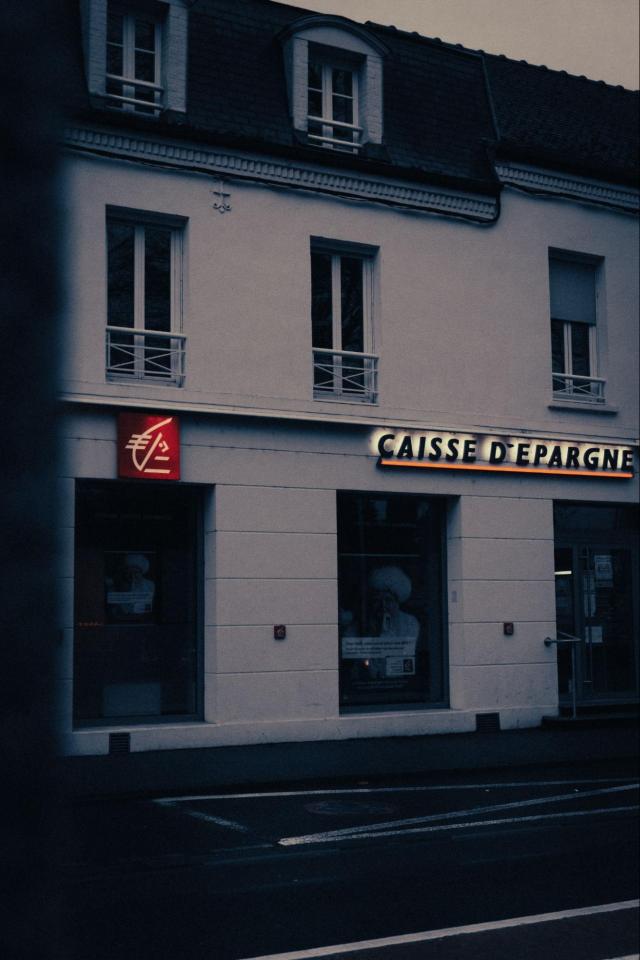Top Banks in France
Understanding the different types of banks available in France.
When researching banks in France, it’s important to understand the different types of banks available there. Depending on the services you seek as an individual or for your company, some banks are more appropriate than others.

There are several types of banks. These include commercial, investment, merchant, and mutual banks. There are also finance companies.
The central bank is introduced in the next section.
Commercial banks have several names in french. They may be referred to as “commerciales”, “de détail”, or “de résaux”. These banks offer services to both individuals and enterprises.
Like in the U.S., commercial banks are the largest and most well-known banks. They offer accounts and accompanying services. These services include credit cards or checkbooks, credit and loans, and savings accounts.
Commercial banks encompass several categories. Traditional banks are brick-and-mortar and much older than virtual banks. Virtual banks are online banks and mobile banks.

Online banks have no branches but still have a full-service offering. Mobile banks, or “néobanques,” are available on smartphones and have limited offerings. For example, they do not offer savings accounts or checkbooks.
Many traditional banks offer virtual services. For example, La Banque Postale offers the “Ma French Bank” mobile bank.
Commercial banks exist at the national and regional branch levels. National banks offer more generic services than regional banks, as they have more resources.
Investment banks are active in financial markets. They buy, sell, and issue securities. They’re also involved with IPOs and sometimes handle foreign exchange transactions.
Many large commercial banks, such as BNP Paribas, also offer investment bank services.
Merchant banks handle corporate and institutional finance for large companies. Note that in French, they’re called “banques d’affaires .”This name translates as “business bank” or “investment bank.”
Merchant banks offer some of the same services as investment banks, such as investing and handling IPOs. They also assist with mergers and acquisitions transactions and strategic and financial consulting.

Mutual banks, also called cooperative banks, aim to provide their customers with the best banking services possible. These include credit unions and mutual savings banks. Groupe Crédit Agricole is a mutual bank.
Finance companies (literal translation - financial payment companies) sometimes partner with the banking system. They can execute some transactions but do not take deposits from the public and are mostly involved with mortgages and consumer credit.
Partnering with a bank allows a finance company to offer bank accounts. The two may also partner to offer mobile and out-of-country payment accounts.
What is the Main Bank in France?
It depends on what “main bank” means. The “main bank” for managing the economy is the Banque de France (BoF). This is their central bank.

Although France is a member of the Eurosystem, the Banque de France is much older than the Euro. It was founded in 1800 and joined the Eurosystem in 1999. Thus, the Banque de France is under the European Central Bank’s (ECB) decisions.
The French Central Bank - Banque de France
The BoF’s three main objectives are to:
- Ensure financial stability,
- Provide services to households, small and midsize enterprises (SMEs), and the government,
- Drive French monetary policy.
The Banque de France is sometimes called a “banque d’émission” because it can print currency. It is the largest printer of euro banknotes.

The Banque de France has many roles. It supervises the financial sector, monitoring 770 banks. In addition, it provides services to small and medium-sized enterprises, such as company ratings and debt mediation.
The BoF is sometimes directly involved in the financial market. For example, it helps stabilize the CFA and CPA’s exchange rates with the Euro.
The bank oversees the ECB’s securities auctions, manages the French government’s accounts, and facilitates payment for the French Treasury.
Outside of supervision and implementing monetary policy, the Banque de France is rarely involved with larger companies. But, the bank does facilitate payments for some public companies.
Most Profitable Bank - BNP Paribas
If the “main bank” refers to the most profitable, that would be BNP Paribas. BNP Paribas is an international banking group with over fifty-five thousand domestic employees. It is the second-largest bank in the E.U. and ninth-largest globally.

BNP Paribas was founded in 2000 due to a merger between two french banks. The company’s full name is “BNP Paribas S.A.”. S.A. is an acronym for “société anonyme”, the french equivalent of a corporation.
BNP Paribas operates in the U.S. through Bank of the West and First Hawaiian Bank. BNP Paribas has controlled its parent company, BancWest, since 2001.
In 2021, the company earned 46.2 billion euros in revenue and closed to 9.5 billion euros of net income. Close behind was Crédit Agricole Group, with 9.1 billion euros of net income. The third most profitable bank in France only made 5.6 billion Euros.
BNP Paribas is making far more profits than most of the competition. Notably, Crédit Agricole Group experienced a 94% increase in profits over one year. As a result, one of these two will likely be the main bank in France in 2022.

BNP Paribas has become so prevalent because it offers three major service areas covered by commercial, investment, and merchant banks.
- Commercial and personal banking services
- Investment and protection services
- Corporate and institutional banking
Yet, not all the top banks in France are strictly commercial and offer the same services.
A Note on Reading Figures Published in French

When researching these banks, the French site usually has much more detail than the English site. The figures are easy to read, even for investors who can’t understand French.
A French-English dictionary can help readers understand what each line item means.
In French and many other languages, periods and commas have opposite uses. So, for example, if a french price is “10,99” euros, that’s ten euros and ninety-nine euro cents.
Likewise, if a balance sheet reads “100.000” euros, that’s not one hundred euros, but one hundred thousand euros. Sometimes the period is omitted and replaced with a space.
“Mrd €” stands for “milhares de euros”. This is not millions of euros, but billions. “M €” means millions. “Milles” means thousands.
If unsure, the best practice is to look up a comparable figure in English. For example, BNP Paribas’ site lists in English that their profit was €9.5 billion. The French figure was 9 448 M € or 9,448 million euros.
Top 10 French Banks in 2021
According to the hyperlinked source, these banks are listed in order of highest to lowest net profits. In addition, where possible, the staff size or the number of individual clients (non-business) is given to help readers understand the size of the bank.

When reading individual client numbers for smaller banks on this list, note that the population of France is about 67 million. For staff numbers, note that France had 30-31 million people in its labor force over 2019-2022.
Some of the banks on this list are quite old, having been founded in the 1800s. Others are the results of countless mergers. Along with commercial banks, some banks on this list are mutual banks and are even involved in insurance.
Along with their net profit in 2021 and a comparison to past performance, you can find details about the bank’s history and background, subsidiaries, services offered, and other unique or interesting facts below.
1. BNP Paribas, €9.49 Billion
Although BNP Paribas was created in 2000, its first predecessor came in 1822. Its first french predecessors were founded in 1848. Altogether, BNP Paribas consists of more than ten banks.
It has several subsidiaries, each specializing in a certain area – for example, BNP Paribas Real Estate, BNP Paribas Securities Services, and Arval, which is involved in vehicle leasing and mobility solutions.

BNP Paribas increased its net income by only 34% from 2020 to 2021. This is quite weak compared to the rest of the top ten. But, it only saw a decrease in net profits of about one billion euros between 2019 and 2020.
The other top three banks experienced decreases of 2.5 billion to over 4 billion euros.
BNP Paribas has over thirty million clients around the world. It is a full-service commercial bank and the largest french investment bank in terms of revenue and assets managed.
2. Crédit Agricole Group, €9.10 Billion
Crédit Agricole Group was created in 1885 following a law allowing agricultural unions to be created. It mostly served small family farms and helped finance the electrification of the french countryside.
Over time, the French government further helped the bank develop. In 1897 Crédit Agricole began receiving annual funding from the French central bank, and an 1899 act allowed it to establish regional banks. It has since become one of the largest mutual banks in the world.

LCL is a subsidiary of this group, and its profit is part of its net income. Crédit Agricole Group’s net income increased 94% from 2020 to 2021. The Crédit Agricole bank contributed 5.8 billion euros to the net profit. That bank alone had 24.4 million clients.
Most banks are corporations (the aforementioned “société anonyme” or S.A.). However, Crédit Agricole is not only a corporation with a board of directors but also a mutual insurance group company. Therefore, it legally has two business structures.
3. Société Générale, €5.60 Billion
Along with BNP Paribas, Société Générale is a very well-known French commercial bank. You might have heard it referred to as SocGen.
Société Générale was founded in 1864, during Napoleon Bonaparte’s reign. It served small businesses and individual clients, but by 1871 entered the public market and opened an office in London.

Société Générale saw a 258 million euro loss in 2020. The bank’s net profit in 2019 was 4.1 billion euros. Société Générale has recovered well. It had nine million clients in 2020.
It has a three-pillar strategy comprised of domestic retail banking (partly through local subsidiaries), international financial and banking services, and corporate and investment banking.
This bank’s stock trades in real-time, and other financial institutions own parts of its stock. As of January 2020, BlackRock owns 6%, and Lyxor Asset Management Group owns 5.4%. Employees also own over 6% of the bank’s stock.
4. BPCE Group €4.46 Billion
The BPCE Group was created in 2009 when Banques Popularies and Caisses d’Épargne, two large mutual banks, merged. Caisses d’Épargne was founded in 1818 in Paris, and Banques Popularies was created later in 1878 in Angers.
At the end of 2021, the group had 36 million customers. Besides banking, the group also offers insurance services. Note that Natixis mentioned later on this list, is a subsidiary of the BPCE Group.

The group’s profits grew 212% from 2020 to 2021. Caisses d’Épargne contributed nearly 2.1 billion euros and Banque Popularies brought in 462 million euros. However, these two banks experienced low growth (10-33%) compared to other top ten banks.
It’s worth noting that over two billion euros came from the group’s many subsidiaries. As a result, BPCE Group is very diversified in banking.
Crédit Foncier de France specializes in real estate financing. Oney Bank and Fidor Bank are online banks. Crédit Maritime serves France and overseas territories.
5. Crédit Mutuel Group €4.10 Billion
The “mutuel” part of the name refers to the bank’s founding as a mutual bank in 1882. While it remains a mutual bank, it is also a full-service commercial bank. It has insurance offerings and was involved in telecommunications from 2005 to 2020.

The CIC is a subsidiary of this group. According to its website, Crédit Mutuel has 8.3 million clients. In 2020, the Crédit Mutuel Alliance Fédérale made up 67% of the group’s net income from banking.
The third major subsidiary, Crédit Mutuel Arkéa, contributed 574 million euros to the group’s profits. Its profits grew 61% between 2020 and 2021
Crédit Mutuel Arkéa, headquartered in the Bretagne region, comprises several subsidiaries, including payment services and companies serving certain segments (e.g., Arkéa Investment Services). Crédit Mutuel’s other subsidiaries include the online bank Monabanq.
6. Natixis €4.00 Billion
Natixis is a subsidiary of the BPCE Group. It’s a mutual bank resulting from the 2006 merger that created its parent group.
However, its history began in 1996 when a merger between BFCE and Crédit National created Natexis. Then, it merged with Banques Populaires Group in 1998. Finally, it merged with Ixis, Caisses d’Épargne’s investment banking subsidiary, in 2006.

Both members of the BPCE group own a 35% share in the firm (for a total of 70%). Most of the remainder of Natixis’ capital is held by the public.
It offers wealth management, corporate banking, investment, and insurance services. Natixis mostly serves companies, government institutions, and international organizations. Its net income grew an impressive 249% between 2020 and 2021.
The firm conducts business in over thirty-eight countries in the Americas, Asia Pacific, Middle East, and Europe. It also has subsidiaries dedicated to certain fields, such as Natixis Investment Managers, Natixis Payments, Natixis Assurances, and Natixis Wealth Management.
7. RCI Banque €1.19 Billion
RCI Banque S.A. is Renault’s financial subsidiary. It offers insurance and financing to customers worldwide buying automobiles from Renault or its subsidiaries.
These subsidiaries include major national brands such as Renault Korea Motor (formerly Renault Samsung Motors), Lada, and Dacia. In addition, RCI Banque also provides limited financing for some Nissan brands.

The bank only increased its net income by 19% between 2020 and 2021. This is explained by the fact that RCI Banque provides financing, leases, and automobile rentals.
The rampant inflation in 2021, however, has severely disrupted the auto industry, driving higher gas, car, and car rental prices.
Interestingly, RCI launched a savings account program in 2012. The “ZESTO” accounts are open to the public in France, the UK, Germany, Austria, Spain, and Brazil. At the end of December 2020, collected deposits surpassed twenty billion euros.
In addition, it’s also involved in electronic payments as part of its leasing and purchasing services.
8. CIC €956 Million
CIC is a subsidiary of Crédit Mutuel. CIC stands for “Crédit Industriel et Commercial”, or Industrial and Commercial Credit Company. It is the oldest deposit bank in France, created in 1859. It had an estimated 19,400 employees at the end of 2021.

It has two subsidiaries. The Transatlantic bank offers a variety of banking services and also specializes in serving ex-pats and diplomats. As its name suggests, it has branches abroad, including in Singapore, New York, and London.
The Bank of Luxembourg, not to be confused with the central bank of Luxembourg, helps the CIC offer services internationally.
The CIC experienced the highest growth of any top ten banks between 2020 and 2021, at 334%. But, From 2019 to 2020, the company’s net income dropped by almost 500 million euros. Just behind the LCL, the CIC had 5.4 million clients in 2021.
The CIC offers most commercial bank services and also mortgages. According to a 2022 study by BearingPoint-Kantar, CIC was number one in client relations among french banks.
9. LCL €800 Million
LCL has been a subsidiary of Crédit Agricole since 2002, though it began as a local bank for the city of Lyon. LCL is short for “Le Crédit Lyonnais”. Along with BNP Paribas and Société Générale, it is one of the three oldest banks in France.
While most banks on this list are headquartered in Paris, LCL is headquartered in Lyon. Its slogan translates as “LCL. My life. My city. My bank.”.

It is mostly concerned with retail banking, corporate banking, and wealth management. LCL had six million clients at the end of 2021.
From 2020 to 2021, LCL’s net profits grew by 142%. While taken alone, the growth rate is impressive; it’s middle of the pack among the top ten french banks.
LCL has two subsidiaries, each in specific markets. The two most involved in the business are Interfimo and Angle Neuf.
Interfimo provides consulting and financial services to professionals, and Angle Neuf conducts real estate investment.
10. La Banque Postale €636 Million
As the name suggests, this bank was created and completely owned by the French mail service. La Banque Postale is a commercial bank with about 12 million checking accounts in 2022. It additionally provides insurance and portfolio management services.
La Banque Postale is the only bank in the top ten whose net income fell between 2020 and 2021. The bank’s net income decreased by almost 85%. Nonetheless, La Banque Postale had about 11 million clients in 2020, making it a decently large bank in clientele.

It has a variety of subsidiaries. Some are under the “La Banque Postale” name, such as La Banque Postale Asset Management.
Other interesting subsidiaries include Transactis (which Société Générale was also involved in developing), which offers payment services, and EasyBourse (bourse = stocks), which offers online trading services.
While La Banque Postale isn’t publicly listed, its mobile banking subsidiary Ma French Bank is. This subsidiary offers cards and has no foreign transaction fees.
Researched and authored by Sara De Meyer | LinkedIn
Free Resources
To continue learning and advancing your career, check out these additional helpful WSO resources:




or Want to Sign up with your social account?